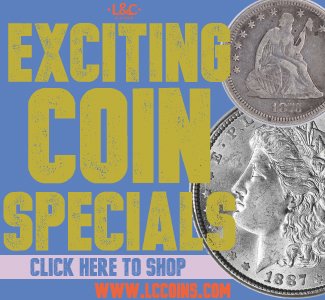Buchanan refused to directly answer his question, preferring to respond by discussing the competitive bidding process and the latitude provided to the Secretary of the Treasury by HR.6058 to consider all factors, including corporate reputations, when selecting a coin marketing partner,
A frustrated Annunzio moved on and next turned his attention to the Treasury’s decision to switch its support to HR.6058 vs. its previous support for the Senate’s amended S.1230 which also called for a 17-coin program. Buchanan replied that the Department believed it to be a much-improved bill that addressed the majority of their past concerns. She noted that while the Treasury had worked with the Senate for six months to revise S.1230 and incorporate the levels of supervision over the marketing of the coins desired by the Treasury, it had been unable to get all the revisions it preferred. The Treasury believed that essentially all of its issues had been addressed in the St. Germain bill and thus it had lent its support to it.
Annunzio then yielded to St. Germain who quickly took the opportunity to criticize the bulk sales provisions of Annunzio’s HR.6158, noting how it did not include any controls over who was eligible to purchase coins under the program. Without such controls, St. Germain suggested that those “convicted of drug smuggling, violations of the Mann Act, embezzlement, tax evasion, stock fraud, bank robbery and child abuse”[22] would be allowed to “back their truck” up to the Mint and purchase any amount of coins they desired. It was a pointed response to Annunzio’s earlier comments regarding the business ethics of the Coin Group members.
While Annunzio and St. Germain each professed their respect and admiration for the other during the hearings, it was obvious that their strongly-held opposing viewpoints on the Olympic coin bills would not prevent either of them from straying from the moral high ground while supporting their bill and opposing the other’s. They were each well-versed in the political gamesmanship often needed to get a bill through committee and passed by the Congress as a whole, and neither was afraid to play the game when necessary to gain an advantage.
Lengthy discussions followed regarding the Treasury’s sales forecasts, the program’s financial risks under St. Germain’s bill vs. Annunzio’s, and the funds to be generated for the Olympic committees. Throughout, Buchanan maintained that HR.6058 had the potential to generate greater funding for the LAOOC and the USOC through its larger number of coins and involvement of private marketers. She also noted that the private marketing of the coins and the guaranteed minimum payout to the committees shifted potential financial risk from the Government to the marketers – a shift endorsed by the Treasury.
Annunzio, who had previously voiced his skepticism regarding multiple aspects of the guarantees being offered by the private marketers, brought the financial discussions to a close by addressing Buchanan:
“I sincerely hope that the Treasury is not setting this subcommittee up to pass a bill under the belief that $30 million will go to the Olympics, and after the law is on the books, Treasury comes back and says that they could not find anybody to bid $30 million, so they are giving the program to someone who is not willing to bid anything.”[23]
He continued:
“I want to assure you that unless a company comes forward and guarantees to this subcommittee in writing that it will bid $30 million, I will not hold a markup session of this legislation.”[24]
The session had not gone Annunzio’s way, but in his closing comments, he made it clear that he was still very much in charge of the fate of any Olympic coin bill and that he had definitely not given up on the passage of his bill. He would soon regain any momentum he had lost, however, via testimony from the numismatic community in the fourth session of the hearing.
To be continued…
* * *
Notes
[1] United States. House Subcommittee on Consumer Affairs and Coinage. Olympic Coin Legislation. 97th Congress, 2nd Session. April 6, 21, 29; May 11 and 12, 1982. p. 1.
[2] ibid, p. 9
[3] ibid, p. 13.
[4] ibid, p. 77.
[5] ibid, p. 81.
[6] ibid, p. 81.
[7] ibid, p. 82.
[8] ibid, p. 113.
[9] ibid, p. 113.
[10] ibid, p. 113.
[11] ibid, p. 124.
[12] ibid, p 137.
[13] ibid, p 168.
[14] ibid, p 184.
[15] ibid, p 188.
[16] ibid, p 190.
[17] ibid, p 190.
[18] ibid, p 192.
[19] ibid, p 192.
[20] ibid, p 193.
[21] ibid, p 193. ibid, p 202.
[22] ibid, p 193. ibid, p 204.
[23] ibid, p 193. ibid, p 221.
[24] ibid, p 193. ibid, p 221.
© Copyright D. Provost 2021. All rights reserved. Used with permission.




